Species E. dulcis | ||
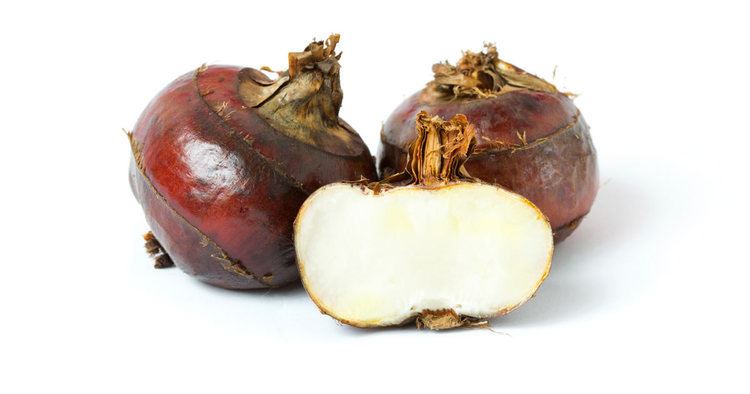 | ||
Similar Chestnut, Water chestnut cake, Water caltrop, Bamboo shoot, Wonton | ||
The Chinese water chestnut or water chestnut (Eleocharis dulcis) is a grass-like sedge native to Asia (China, Japan, India, Philippines, etc.), Australia, tropical Africa, and various islands of the Pacific and Indian Oceans. It is grown in many countries for its edible corms.
Contents
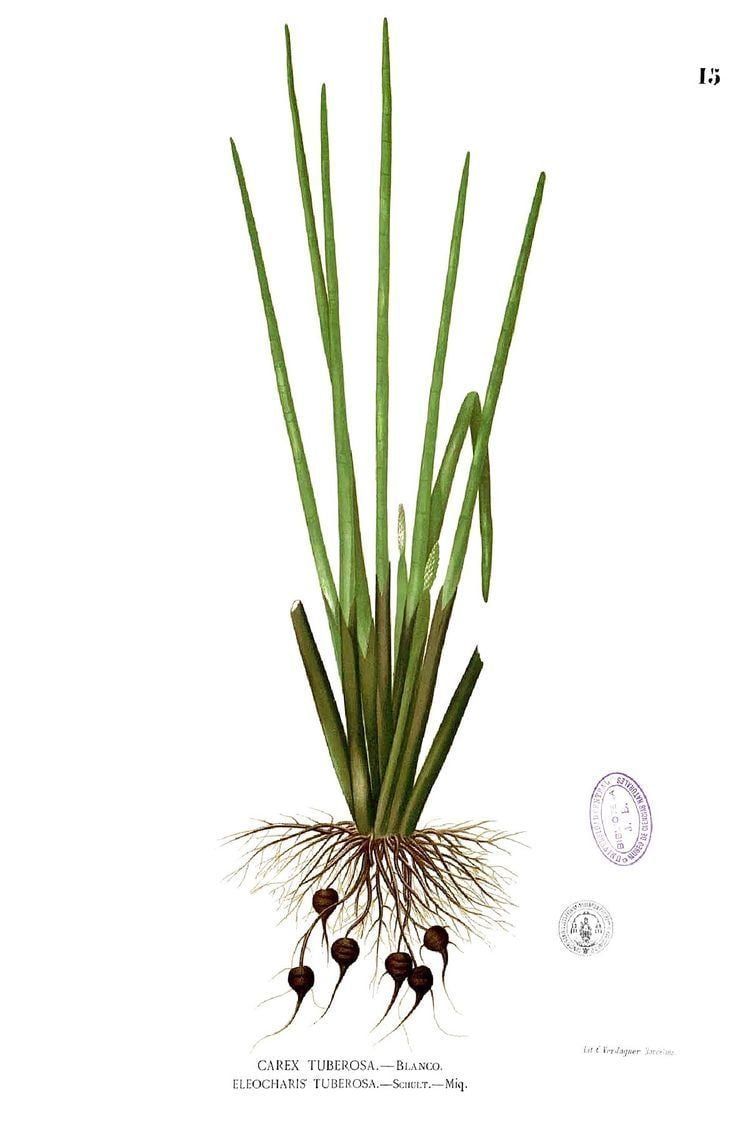
The water chestnut is not a nut at all, but an aquatic vegetable that grows in marshes, under water, in the mud. It has stem-like, tubular green leaves that grow to about 1.5 m. The water caltrop, which also is referred to by the same name, is unrelated and often confused with the water chestnut.

The small, rounded corms have a crisp, white flesh and may be eaten raw, slightly boiled, or grilled, and often are pickled or tinned. They are a popular ingredient in Chinese dishes. In China, they are most often eaten raw, sometimes sweetened. They also may be ground into a flour form used for making water chestnut cake, which is common as part of dim sum cuisine. They are unusual among vegetables for remaining crisp even after being cooked or canned, because their cell walls are cross-linked and strengthened by certain phenolic compounds, such as oligomers of ferulic acid. This property is shared by other vegetables that remain crisp in this manner, including the tiger nut and lotus root. The corms contain the antibiotic agent puchiin, which is stable to high temperature. Apart from the edible corms, the leaves can be used for cattlefeed, mulch or compost.
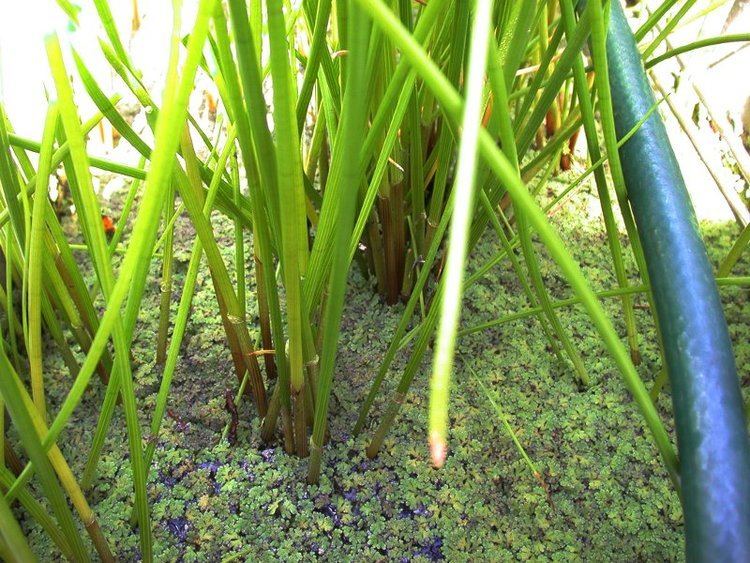
The corms are rich in carbohydrates (about 90% by dry weight), especially starch (about 60% by dry weight), and are also a good source of dietary fiber, riboflavin, vitamin B6, potassium, copper, and manganese.

If eaten uncooked, potentially, the surface of the plants may transmit fasciolopsiasis.
Taste

Raw water chestnuts are slightly sweet and very crunchy. Boiled water chestnuts have a firm and slightly crunchy texture, with a very mild and slightly nutty flavour that may easily be overpowered by seasonings or sauces with which the water chestnut is served or cooked. They often are combined with bamboo shoots, coriander, ginger, sesame oil, and snow peas. Steamed or sauteed vegetable medleys frequently contain water chestnuts. They often are used in noodle or rice dishes.
Nomenclature

The Chinese water chestnut (traditional Chinese: 荸薺; simplified Chinese: 荸荠; hanyu pinyin: bíqi, 馬蹄; pinyin:mǎtí) is native to China and is cultivated widely in flooded paddy fields in southern China and parts of the Philippines, where it is called apulid. In Vietnam, it is called củ mã thầy (in the north) and củ năng (in the south) and is the main ingredient of bánh củ năng hấp, chè mã thầy. In Thailand, it is called somwang (สมหวัง) and it often is used in a dessert named tabtim krob (ทับทิมกรอบ). In India, it is known commonly as singhada, shingada, or singoda.
Cultivation
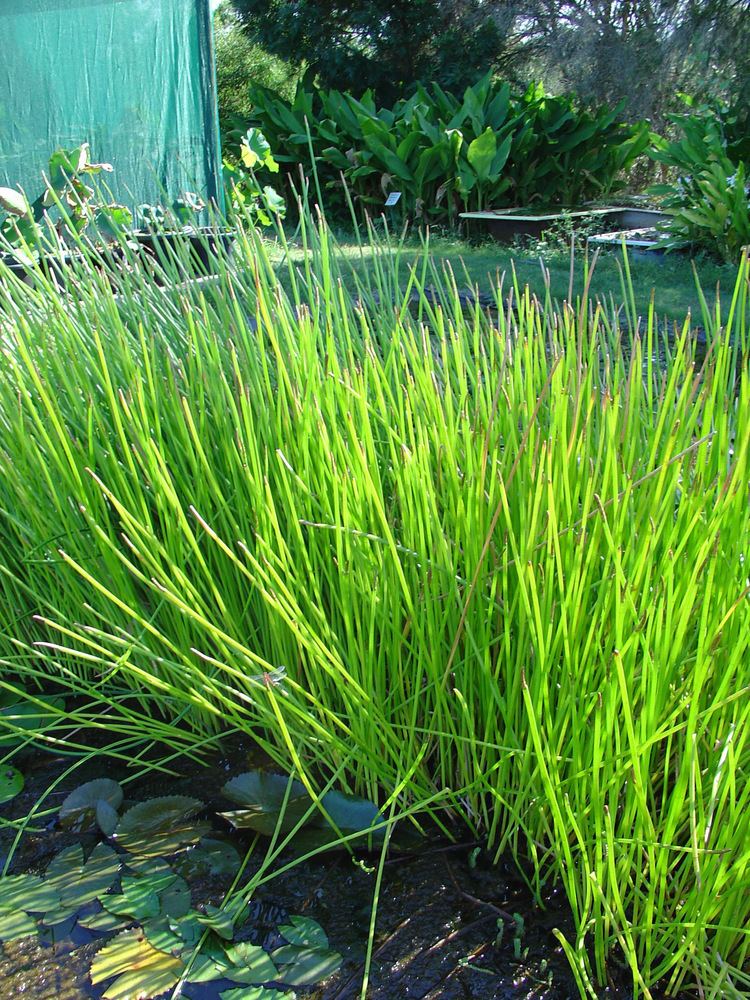
The crop can be cultivated in paddies (2-7.5m wide by up to 100m long to allow for mechanization) or in a hydroponic culture. As it is an aquatic plant, it should always be submerged in approx. 10 cm of water. The crop needs continuously high soil temperatures, ideally 14-15.5 °C. At 13.6 °C, the corms begin to sprout. Soil is ideally a sandy loam with pH 6.5 to 7.2. The plant produces two types of subterranean rhizomes. Under long-daylength conditions, rhizomes grow horizontally and then turn upwards forming daughter plants. Under short-daylength conditions, the rhizomes grow downward and produce a corm at the tip. The photoperiod also significantly influences how fast the corms grow. Corms begin to develop much more slowly if the photoperiod exceeds 12 hours. The corms are also the propagating material. Alternatively, transplants can be used. Machinery such as tractor-mounted vegetable planters can be used for plantation.
Plant nutrition
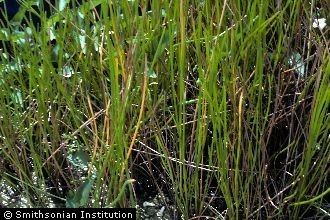
Nitrogen addition is beneficial for corm production, applying a dose before planting and another dose when corms begin to enlarge. To further improve nutrient levels, potassium and phosphorus mineral fertilizers can be used before planting, where the N:P:K uptake ratio is 1.00:0.50:1.75. Also organic mulch, especially mushroom compost, shows good results.
Harvest

Once the corms turn dark brown, they should be harvested. If left in the soil after this point in time, corms will get sweeter, however shelf life will decline. The corms can be harvested using a modified gladioli corm harvester once the paddy is drained. Alternatively, a "water-suction harvester" can be used without the need to drain the paddy. The corms have to be washed after harvest and brushed once they are dry.
Yield
The per plant yield was described at 2.3 kg/season (fresh matter). In China, yields are reported between 20-40t/ha, while in the United States a range between 47-85t/ha has been mentioned.
Storage
The harvested corms are best stored at 4 °C. At this temperature, transpiration and thus weight loss are minimized. This will also delay sprouting and minimize deterioration resulting from small injuries. Corms should not be stored at temperatures above 13.6 °C as otherwise the corms will begin to sprout. If the corms need to be stored longer term, they can also be kept in a solution of 1000 ppm sodium hypochlorite.
Pests
Chinese water chestnut is usually not very prone to pests, nevertheless some animals and fungi may attack the plant: Water fowl may damage the stems and corms, especially when plants are young. Similarly, rodents and grazing animals pose a threat to the Chinese water chestnut, which may be discouraged by keeping the paddy inundated. Fly larvae (Trichoptera sp.) and other leaf-eating caterpillars also feed on the stems. However, unless complete defoliation below the waterline occurs, the plants can normally tolerate this damage. Plant hoppers (Fulgoridae) and scale insects feed on plant sap and may cause subsequent death. Other pests represent nematodes Ditylenchus spp. and Dolichodorus heterocephalus. Fungal species can also attack the Chinese water chestnut. In warmer climates, a rust is caused by uromyces and Cylindrosporium eleocharidis is causing stem blight.
